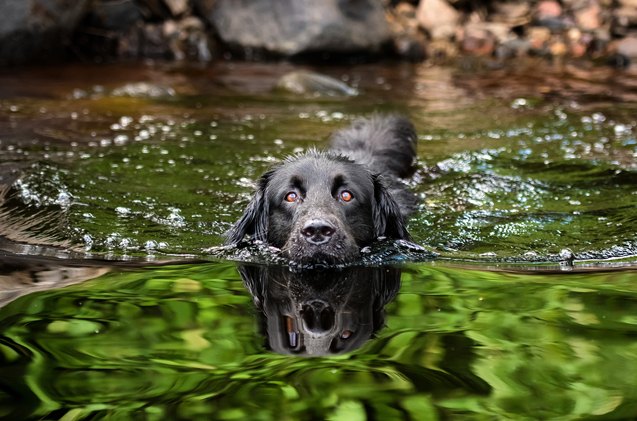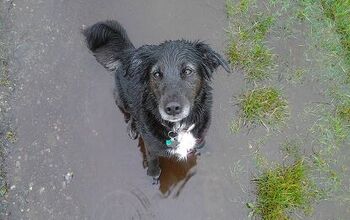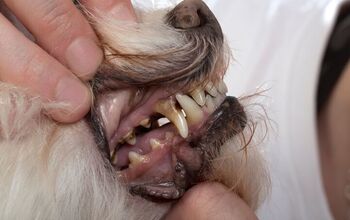What is Pythiosis in Dogs?

Many dogs seem like they were born to swim, and, for some breeds, that is actually true. Retrievers like Poodles and Golden Retrievers are breeds that were developed to retrieve downed game from watery terrain. Even if your dog wasn’t bred for this type of job, he probably still loves to swim. Unfortunately, swimming can sometimes be dangerous for dogs if the water is infected with a parasitic spore known to cause a disease called pythiosis. Keep reading to learn more.
Related: Top 10 Best Water Dog Breeds
Understanding the Basics of Pythiosis
Also known as water mold infection, pythiosis is caused by a parasitic spore belonging to the phylum Oomycota and known by the scientific name, Pythium insidiosum. This parasite is most commonly found in swampy areas in the southeastern United States, though it has been identified as far west as the central valley in California. Pythium insidiosum typically appears during the fall or early winter in ponds, swamps, and wetlands. If your dog swims in an infected area, the spores could enter his body through the nose, mouth, or skin.
Related: How Water is Important for a Dog’s Digestive Health
The Pythium insidiosum parasite is capable of spontaneous movement, so once it enters the body it may travel before settling in the brain, lungs, sinuses, skin, or gastrointestinal tract. Once infected, your dog may develop masses on or below the skin in the form of lesions on the tail, head, neck, perineum, legs, or inside the thighs. Other symptoms may include the following:
- Vomiting
- Diarrhea
- Fever
- Regurgitation
- Weight loss
- Abdominal pain
- Enlarged lymph nodes
- Abdominal masses
When pythiosis settles into the skin, it can cause swollen, non-healing wounds to develop as well as invasive masses of pus-filled nodules. If not treated promptly, the affected tissue may necrotize, or die.
How is it Diagnosed and Treated?
Pythiosis is caused by direct contact with contaminated water – water that contains the Pythium insidiosum parasite. In most cases, it is inhaled or swallowed by the dog and typically makes its way into the dog’s digestive tract. A complete physical exam is the first step in diagnosis followed by a complete blood count, blood chemistry profile, urinalysis, and electrolyte panel. In some cases, abdominal x-rays may be taken to identify abdominal masses, intestinal blockages, or thickening of the intestinal wall. Your veterinarian may also take a biopsy, though a positive culture is needed to make a definitive diagnosis of pythiosis.
Treatment for pythiosis should be started at the first sign of symptoms for the best results. Surgical removal of the affected tissue is the primary course of treatment and laser surgery may also be required afterward to take care of lingering fungal filaments. Following surgery, medical treatment may be recommended for at least six months to control the infection and regular check-ups are important as well. X-rays and other tests may also be repeated.
Though it may be rare, pythiosis is an incredibly dangerous and often fatal disease. If you let your dog swim outdoors, make sure that the water is clean and clear – never let your dog swim in stagnant water or in any water that could potentially be contaminated with parasites or other pathogens.

Kate Barrington is the loving owner of two cats (Bagel and Munchkin) and a noisy herd of guinea pigs. Having grown up with golden retrievers, Kate has a great deal of experience with dogs but labels herself a lover of all pets. Having received a Bachelor's degree in English, Kate has combined her love for pets and her passion for writing to create her own freelance writing business, specializing in the pet niche.
More by Kate Barrington























